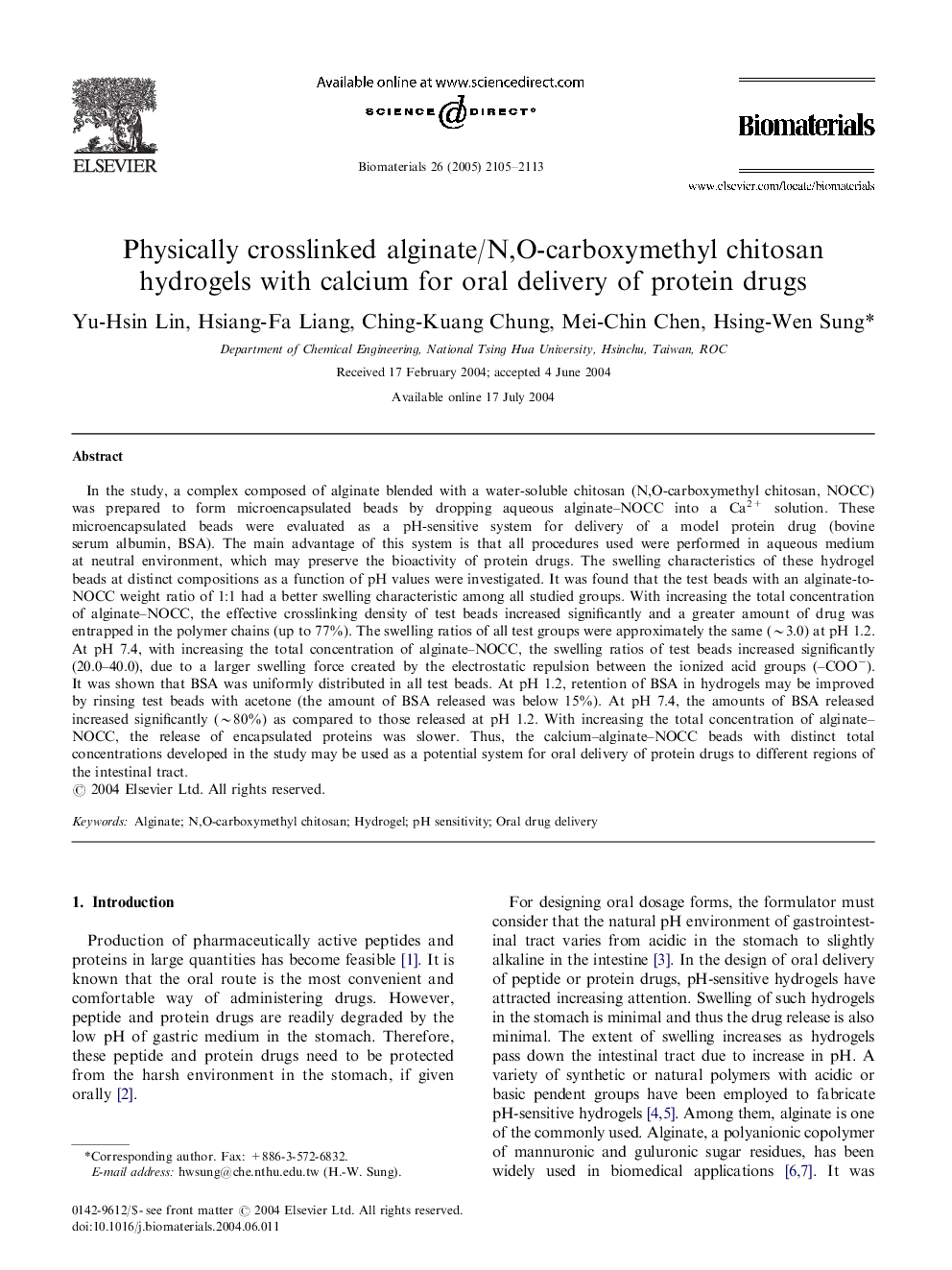| کد مقاله | کد نشریه | سال انتشار | مقاله انگلیسی | نسخه تمام متن |
|---|---|---|---|---|
| 12403 | 791 | 2005 | 9 صفحه PDF | دانلود رایگان |

In the study, a complex composed of alginate blended with a water-soluble chitosan (N,O-carboxymethyl chitosan, NOCC) was prepared to form microencapsulated beads by dropping aqueous alginate–NOCC into a Ca2+ solution. These microencapsulated beads were evaluated as a pH-sensitive system for delivery of a model protein drug (bovine serum albumin, BSA). The main advantage of this system is that all procedures used were performed in aqueous medium at neutral environment, which may preserve the bioactivity of protein drugs. The swelling characteristics of these hydrogel beads at distinct compositions as a function of pH values were investigated. It was found that the test beads with an alginate-to-NOCC weight ratio of 1:1 had a better swelling characteristic among all studied groups. With increasing the total concentration of alginate–NOCC, the effective crosslinking density of test beads increased significantly and a greater amount of drug was entrapped in the polymer chains (up to 77%). The swelling ratios of all test groups were approximately the same (∼3.0) at pH 1.2. At pH 7.4, with increasing the total concentration of alginate–NOCC, the swelling ratios of test beads increased significantly (20.0–40.0), due to a larger swelling force created by the electrostatic repulsion between the ionized acid groups (–COO−). It was shown that BSA was uniformly distributed in all test beads. At pH 1.2, retention of BSA in hydrogels may be improved by rinsing test beads with acetone (the amount of BSA released was below 15%). At pH 7.4, the amounts of BSA released increased significantly (∼80%) as compared to those released at pH 1.2. With increasing the total concentration of alginate–NOCC, the release of encapsulated proteins was slower. Thus, the calcium–alginate–NOCC beads with distinct total concentrations developed in the study may be used as a potential system for oral delivery of protein drugs to different regions of the intestinal tract.
Journal: Biomaterials - Volume 26, Issue 14, May 2005, Pages 2105–2113